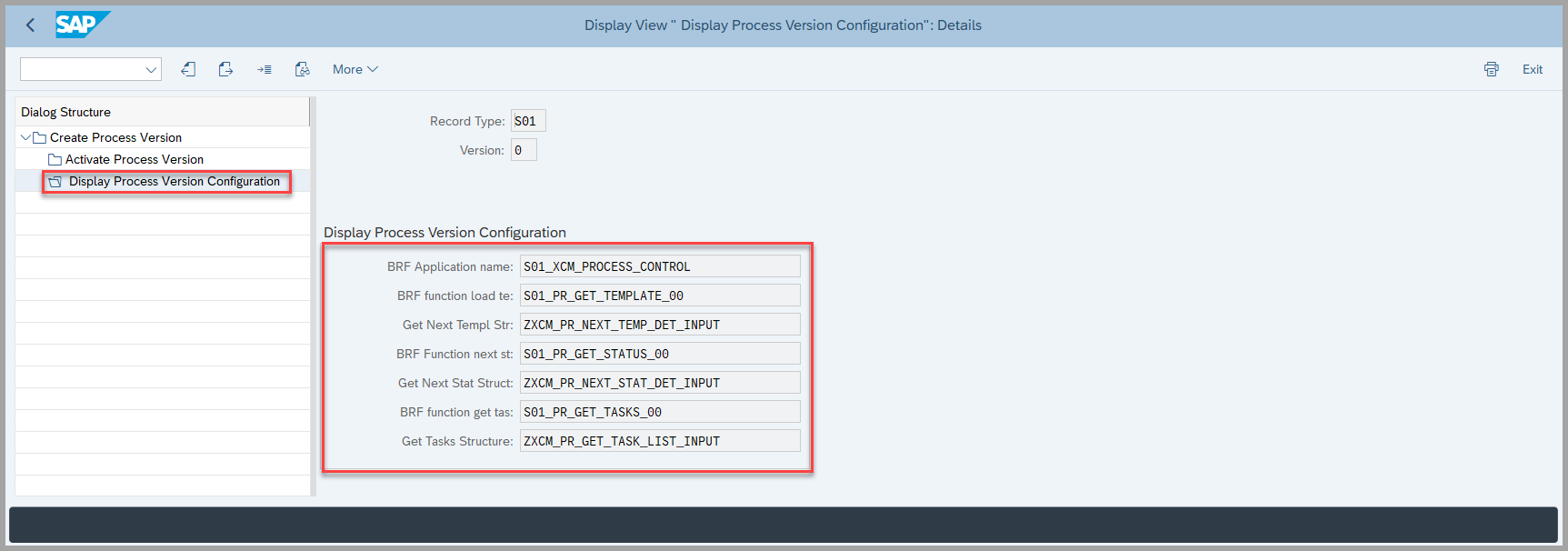BRF+ Generation - Process Control
Overview
- BRF+ application in SAP PLM is used to dynamically define and manage business rules. To enable process control, the BRF+ application must first be generated and activated.
- By executing the
/XCM/BRF_GENERATEreport in SE38, users can generate the BRF+ application, which will then be automatically displayed in the customizing Activity. - The activation status can be verified through IMG Customization, ensuring the correct implementation of the process control rules.
IMG Configuration Steps
XCM allows the generation of multiple BRF+ applications for process control, but only one version can be active per record type at a time.
To Activate the BRF+ application, navigate to: PLM-XCM Customization → XCM Customization → Process Control → Define Process Version
Before creating a new version, make sure no other active version exists for the same record type. If one is already active, uncheck the “Active” checkbox for that version first.
- Create Process Version:
- Click “New Entries”.
- Enter the Record Type for which you want to create the BRF+ application.
- Specify a new version number that does not already exist in the system for that record type.
- Click Save.

2. Activate Process Version:
- In the left panel, go to “Activate Process Version”.
- Select your entry, check the “Active” checkbox, and click Save.

Now By executing the /XCM/BRF_GENERATE report in SE38, users can generate the BRF+ application, which will automatically appear in the relevant Customizing activity.
Steps to Generate the BRF+ Application:
- Before proceeding to the next steps, please refer to the Prerequisite section on this page to ensure all necessary configurations are in place.
- Run the report program in SE38 →
/XCM/BRF_GENERATE. - Select the Process Control radio button.
- Fill in all mandatory fields.
- Change Record Type: Select the change record type for which this BRF+ application will be used to configure process control rules.
- Version: If you want to copy the previous version, select the “YES” radio button; otherwise, it will default to “NO”.
- Package: If the package provided is a local object (
$TMP), a transport request number is not required, but this is not recommended. If it’s not a local object, a transport request number is mandatory. We recommend providing the package and storing changes in a transport request, so you can transport it to other systems. - Structures: Create the DDIC structures with the required input fields to determine tasks, status, and the generic process route template. Then, add these structures to the corresponding fields.
- Click Execute to generate the BRF+ application.
- You can verify its activation status through the IMG Customization to ensure correct implementation

-
Once the BRF+ application is generated using the report program, three decision tables are automatically created in the corresponding Customizing Activity, as shown in the screenshot above.
-
These BRF+ decision tables define the core logic for process control:
- S01_PR_GET_TEMPLATE_00 – Defines the global process route template and the default routing logic.
- S01_PR_GET_STATUS_00 – Controls workflow and status transitions for change records. It uses process routes, status profiles, and processing statuses to manage the change process lifecycle.
- S01_PR_GET_TASKS_00 – Determines status updates based on task outcomes. It defines how user statuses should change depending on whether a task in the process route is approved or rejected.

Prerequisites
Before generating a new BRF+ application, ensure that no other BRF+ application is active of same Record Type. Once confirmed, Create the new version and activate it then proceed with the generation process.
For step-by-step instructions, refer to: BRF+ Generation - Process Control
Keywords
Active version, Process Control, BRF+ application